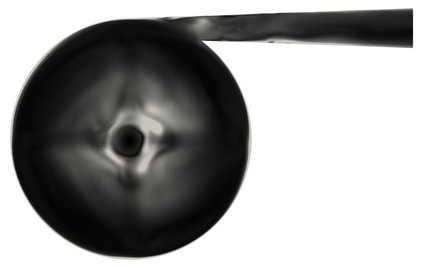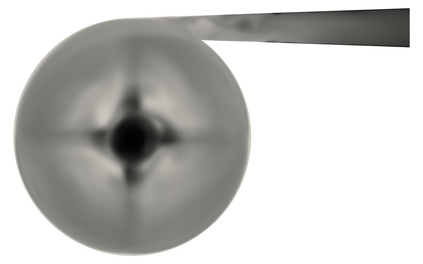The development of blood-handling medical devices, such as ventricular assist devices, requires the analysis of their biocompatibility. Among other aspects, this includes hemolysis, i.e., red blood cell damage. For this purpose, computational fluid dynamics (CFD) methods are employed to predict blood flow in prototypes. The most basic hemolysis models directly estimate red blood cell damage from fluid stress in the resulting flow field. More advanced models explicitly resolve cell deformation. On the downside, these models are typically written in a Lagrangian formulation, i.e., they require pathline tracking. We present a new Eulerian description of cell deformation, enabling the evaluation of the solution across the whole domain. The resulting hemolysis model can be applied to any converged CFD simulation due to one-way coupling with the fluid velocity field. We discuss the efficient numerical treatment of the model equations in a stabilized finite element context. We validate the model by comparison to the original Lagrangian formulation in selected benchmark flows. Two more complex test cases demonstrate the method's capabilities in real-world applications. The results highlight the advantages over previous hemolysis models. In conclusion, the model holds great potential for the design process of future generations of medical devices.
翻译:暂无翻译














